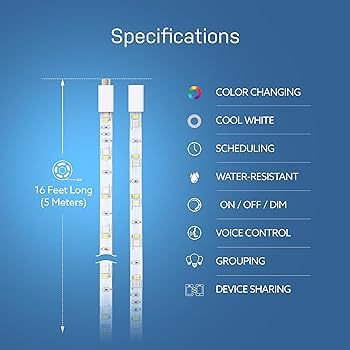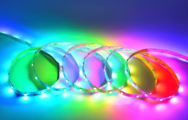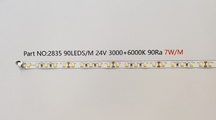How to look at the model specifications of led light strips

Specifications
LED light strip model specifications refer to labels used to describe the characteristic parameters of LED light strips. They can help users choose a light strip that suits their needs, and also facilitate manufacturers and sellers to uniformly label and manage light strips.
To understand the model specifications of LED light strips, you can refer to the following points:
Length: The length of an LED light strip is usually specified in meters (m). For example, a one meter long LED strip would be labeled "1m".
Number of LED lamp beads: The number of LED lamp beads on the LED lamp strip is also a very important parameter. It is usually expressed in terms of the number of LED beads per meter (m), such as "60LED/m".
Power: The power of an LED light strip refers to the power per meter (m), usually measured in watts (W). For example, "12W/m".
Voltage: The voltage of LED light strips is usually DC voltage, the common ones are 12V and 24V. This is also the key to choosing the right power supply.
Protection level: LED light strips usually have a protection level, usually expressed by IPXX. The first X represents the degree of protection of solid objects, and the second X represents the degree of protection of liquids. For example, IP67 means that the light strip can completely prevent the intrusion of solid objects and will not be damaged when immersed in 1 meter of water for 30 minutes.
Color temperature: The color temperature of LED light strips is usually expressed in units of "K". Generally speaking, the color temperatures of LED light strips are divided into three types: warm white, neutral white and cool white, with corresponding color temperature values of 2700-3500K, 4000-4500K and 5000-6500K respectively. Different color temperatures can bring different visual effects.
CRI: CRI (Color Rendering Index) is the color reproduction index, which is used to evaluate the color reproduction degree of the light source. Usually a CRI value between 80-95 can ensure better color performance.
Fitting method: The fitting method of LED light strips is usually divided into adhesive type and non-adhesive type. Adhesive-backed LED light strips can be directly pasted on a smooth surface, while non-adhesive-backed LED light strips need to be fixed using mounting brackets.
Material: The material of LED light strips usually includes PCB, FPC, etc. Among them, PCB (Printed Circuit Board) is a printed circuit board with high hardness and is suitable for occasions that require strong anti-extrusion ability. FPC (Flexible Printed Circuit) is a flexible printed circuit board that can be bent and is suitable for installation situations that require more flexibility.
The above are the common specifications of LED light strips. You can also choose the appropriate LED light strip model according to your needs.





